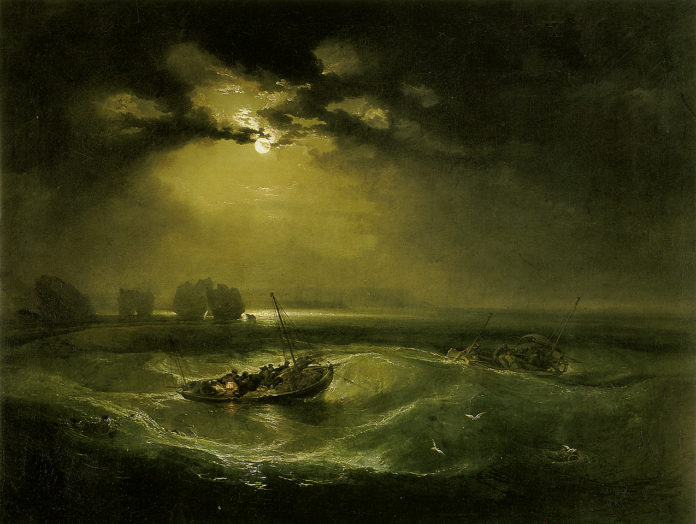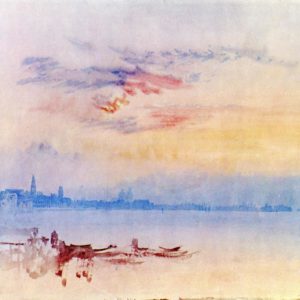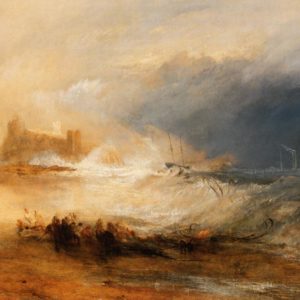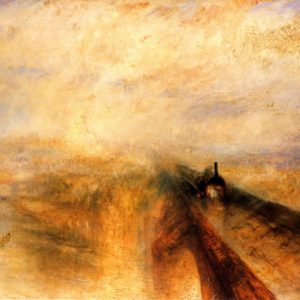It is difficult to give an unambiguous definition of the style of Joseph Mallord William Turner. On the wave of fascination with French impressionism, the opinion about Turner appeared as a “first impressionist.” But, unlike the subsequent Impressionist painters (Whistler, Monet), who rejected the academic style, whose origins were in the art of the Renaissance, William Turner, being a member of the Royal Academy, all his life cherished this status and did not neglect the academic school of writing.
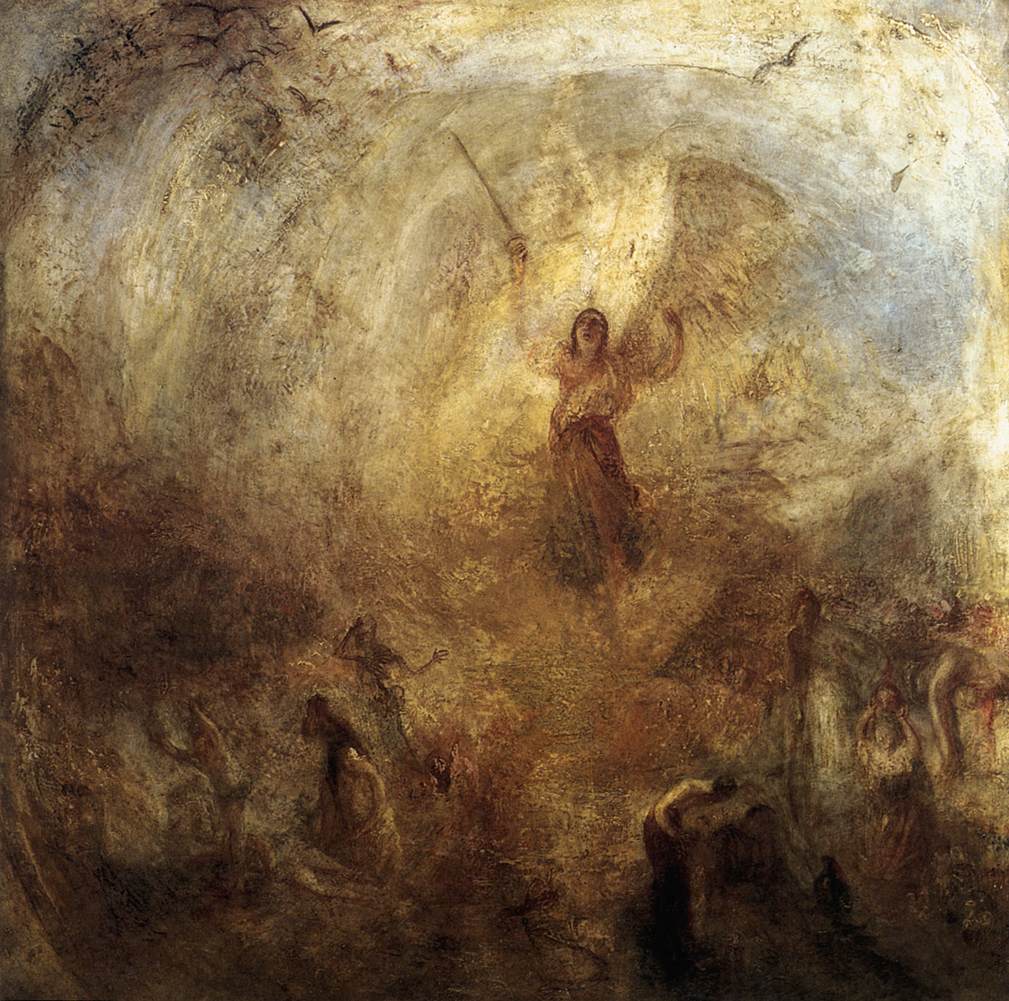
Adherents of abstract expressionism in America enrolled Turner in their ranks. But still, most art critics hold the view that the artist throughout his life was an adherent of representative art. At the end of the XVIII century, landscape painting was considered a secondary genre, compared with the historical or portrait. He acquired new means of artistic expression, which allowed him to be called a “painter of light.” So why does the work of the master, in this case, gravitate towards the opposite direction? Shakes suggest that “Turner simplified the forms and intensified the color intensity to represent the ideal Platonic world of form and feeling.”
The movement to a certain reality, which differs from the one that surrounds us, the sublimity and depth of truth, this is exactly what the artist tried to portray, and not escape from reality to the world of meaningless abstractions. From the youthful years, Reynolds had an aesthetic influence on the formation of Turner’s views on painting. In his lectures, he supported the basic idealistic doctrine of academic art, which developed from the time of the Italian Renaissance. It can be justifiably called the theory of poetic painting. That is, artists should in their works strive to achieve a visual correspondence to a deep humanism. Therefore, in the landscapes of Turner, there is almost always a person.
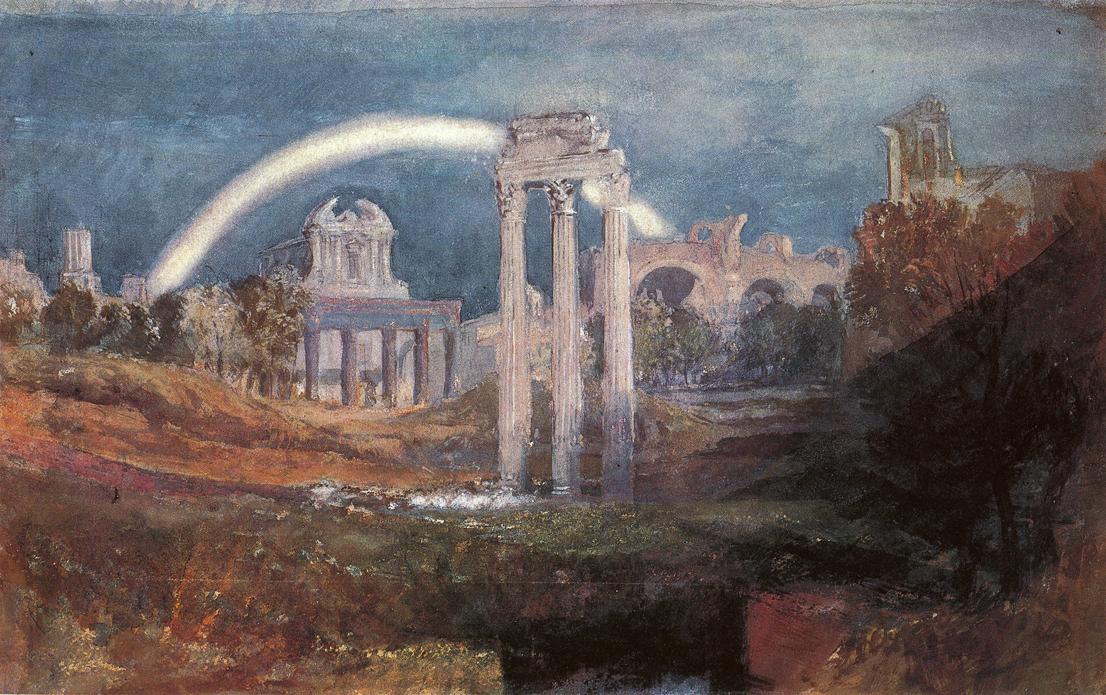
Images are aligned to achieve maximum visual harmony, connectivity, and sweetness. Turner refers to the decorum method, which is an associative method for achieving the most accurate correspondence of the time of day, light and weather to the idea of the picture. In addition, in many works, he resorts to various associative techniques, often encountered in poetic works. Among them, allusions are hidden hints of special significance; direct comparisons of forms and metaphors – a reception when something visible implies something invisible.
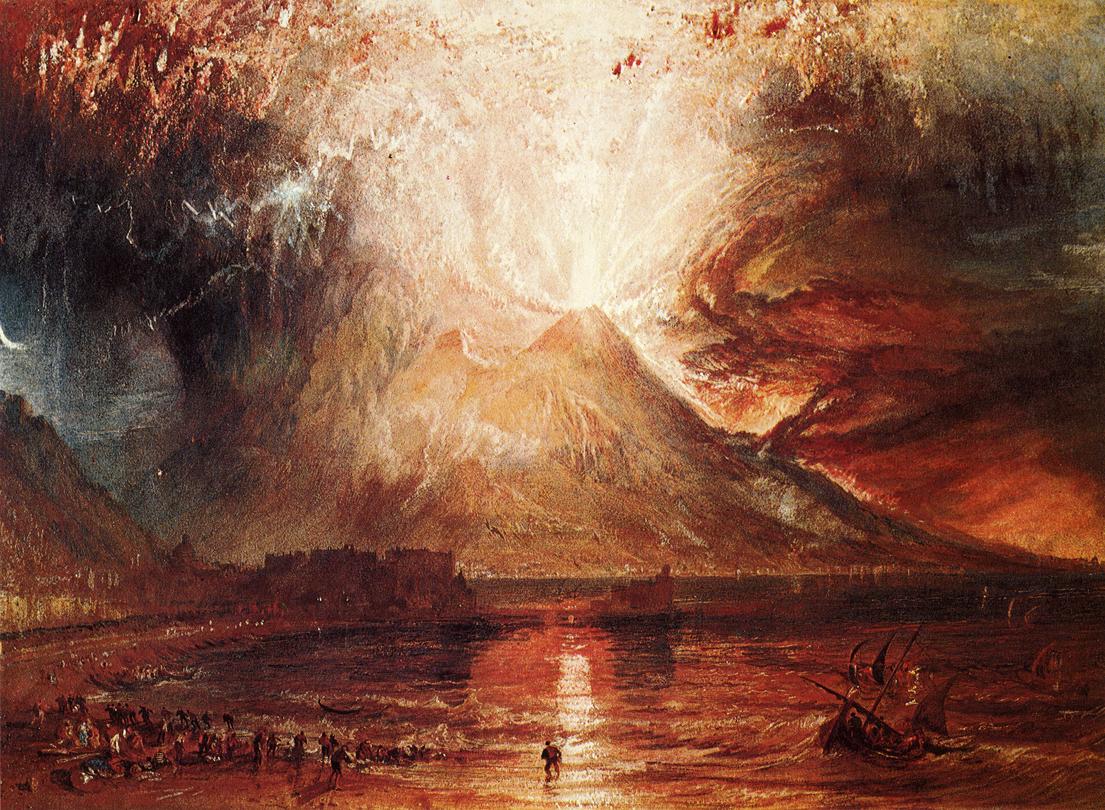
Sometimes William Turner built from the visual metaphors complex allegories. In this, he again followed the teachings of Reynolds, who in his seventh lecture suggested that artists, following poets and playwrights, use figurative and metaphorical expressions to enrich their creativity with new images. Already in his early works, for example, engravings of the Antiquities of England and Wales, Turner introduces a moral aspect into his work. He touches upon the question of the shortness of human life, the fragility of civilizations, indifference to this transience, the inclination of mankind to destruction, and many other topics.
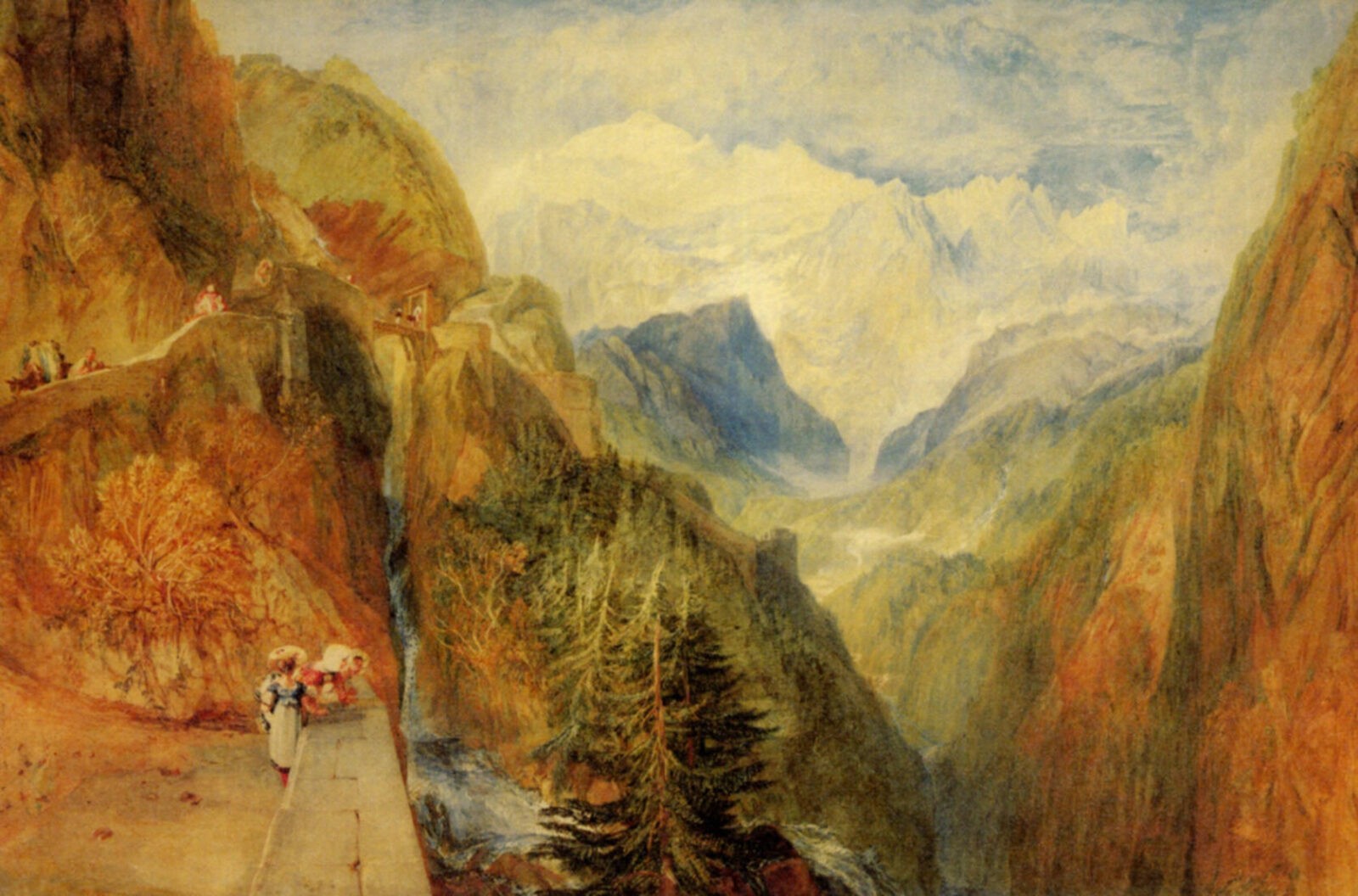
Turner fulfilled Reynolds’s demand: artists should be moralists and consider people’s actions in a critical way. Reynolds urged artists not to give their moral assessments to random phenomena or petty human experience, but to explore the universal truths of our being. In 1799, William Turner got acquainted with the work and philosophy of Claude Lorrain. After this, he turns to the study of the mechanisms for transferring the semantic content of the image. The French painter made extensive use of visual metaphors, and Turner undoubtedly caught the meaning of many of them, because over time very similar metaphors found a place in his own works. Turner loved the sea; his love for melodramatic and tragic subjects found nutritious soil in the sea. When France threatened to invade England, Turner began to write a series of marines depicting terrible disasters. He felt the readiness of the public to perceive such images. There are a lot of paintings by the artist on this subject.
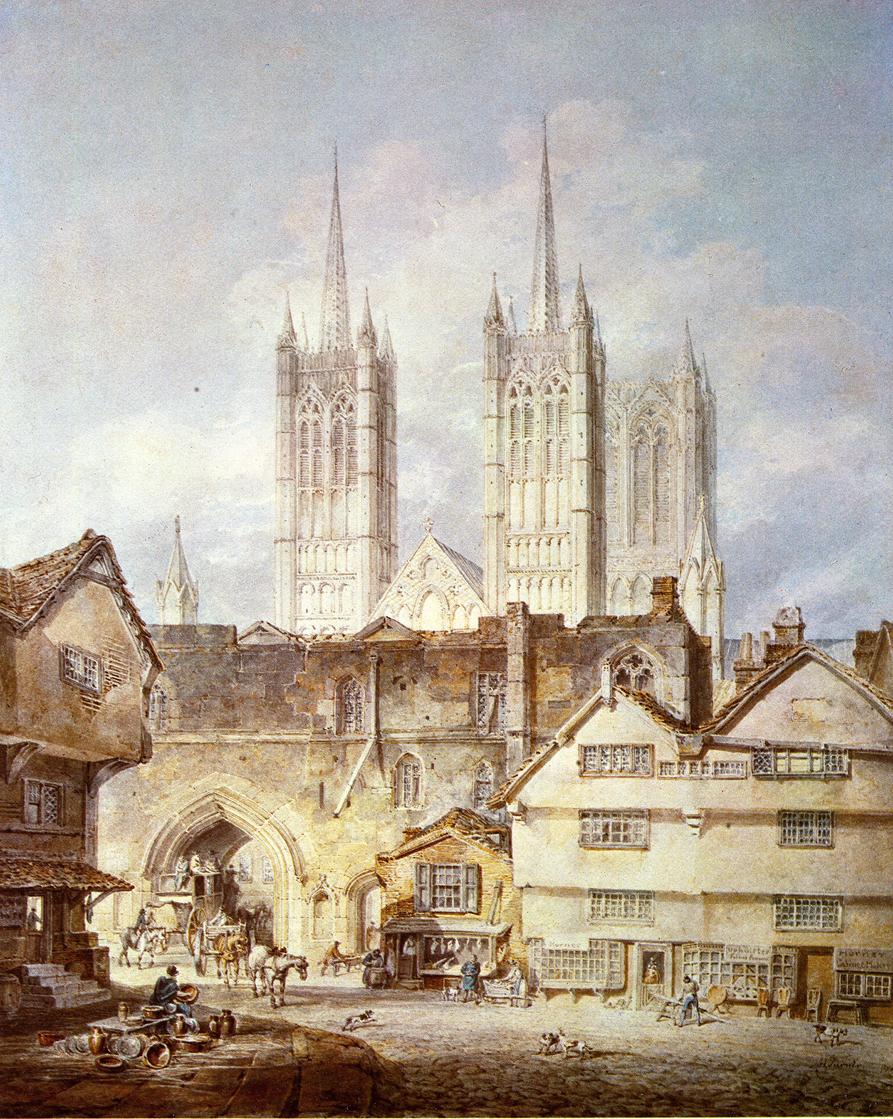
In 1805 he wrote one of the most famous of his “shipwrecks”. The sea represents a seething, foaming mass, and the skill with which the artist conveys its movement and the internal energy of the water element are clearly visible. The overturned merchant ship – “merchant” – is half hidden by a fishing boat, whose crew tries to save passengers in the boat. Turner often disposes of ships in this way, sometimes building five ships one on the other. Perhaps this is due to his fascination with the form: such constructions create intricate outlines, and Turner liked to draw shapes. The picture also contains a moral aspect. In contrast to the surrounding environment, people deliberately depicted as clumsy remind us of the “insignificance” of a person and emphasize the futility of efforts to resist the mighty forces of nature.
After the first trip to Italy in 1819, the artist’s style began to change. He began to study the effects of light and to seek new ways of his image, corresponding to the aesthetics of the Sublime. Subsequently, for this, he was called the “painter of light.” The idea of the Sublime should have included the image of the terrible and terrible, but it should not have frightened the viewer. Rather, it was to be a catharsis, as Aristotle understood it, a purification by suffering. Since the Sublime became a moral and moral category, Turner in his works with his help tried to disturb the consciousness of British society. Thanks to this, he managed to raise landscape painting to a height unknown to her before, as he symbolically weaved political motives into his innocent landscapes. The aesthetics of the Sublime had a natural power to enchant and entice and therefore could control consciousness. Once she was involved with politics and social problems, Turner saw in it a powerful potential that could make it a social force.
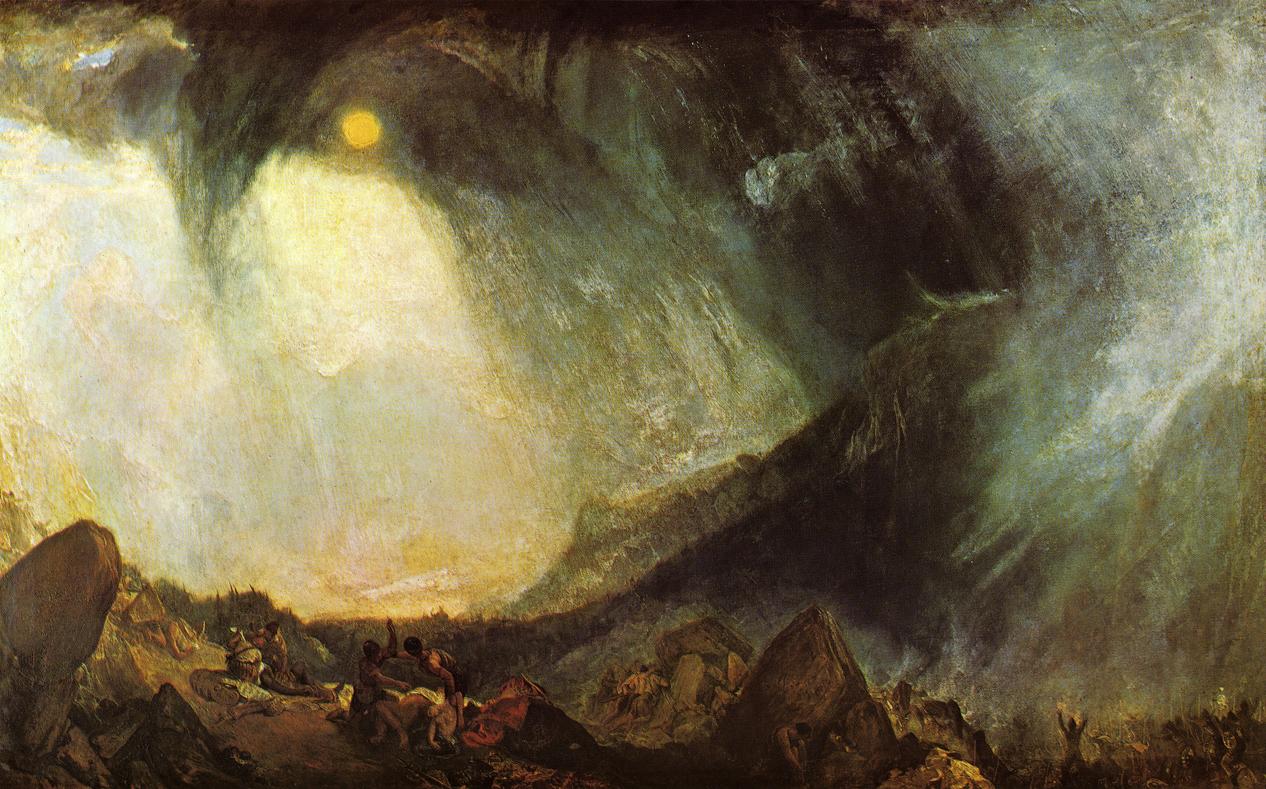
One of the examples of Turner’s use of the aesthetics of the Sublime in the political context was the picture “The Snowstorm. The passage of Hannibal through the Alps, written in 1812. This is an allegory of the fact that the hopes of gaining the upper hand in the confrontation with nature and overcoming the inherent weakness and inconsistency of human nature are in vain. Here we see a reminder of what a joke fate played with the commander. It is quite clear that the latent irony was addressed to Turner’s compatriots – the inhabitants of the British Empire, warning of the dangers that await them, if they, like Hannibal, put their interests above the state ones. This hint was all the more appropriate because at that time Britain was at war with Napoleon.
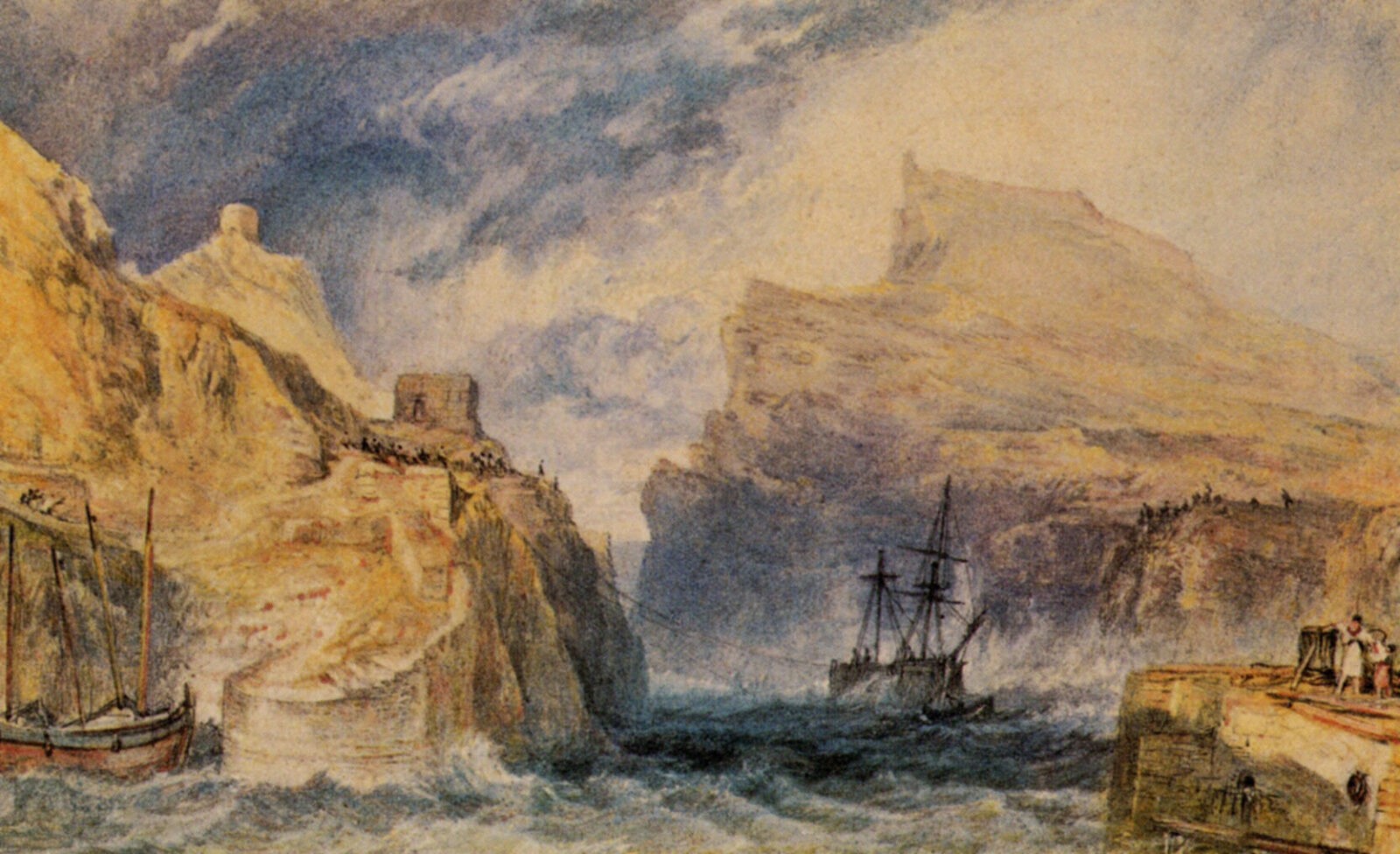
The idea that citizens of their country should be left aside self-interest, vanity and luxury in the pursuit of the common good. At the end of his life, Turner, not giving himself a break, remained an industrious creator: he opened up new methods of work, vigorously took up political publications and selected his scenes with an allegorical meaning. In addition, he was still occupied with the study of new aesthetic and philosophical ideas. The public does not always manage to understand the images and catch their hidden meaning. But the artist does not seek to make his paintings more accessible to perception or simplify their design. On the contrary, a lack of understanding led to the fact that he, even more, complicated his works.
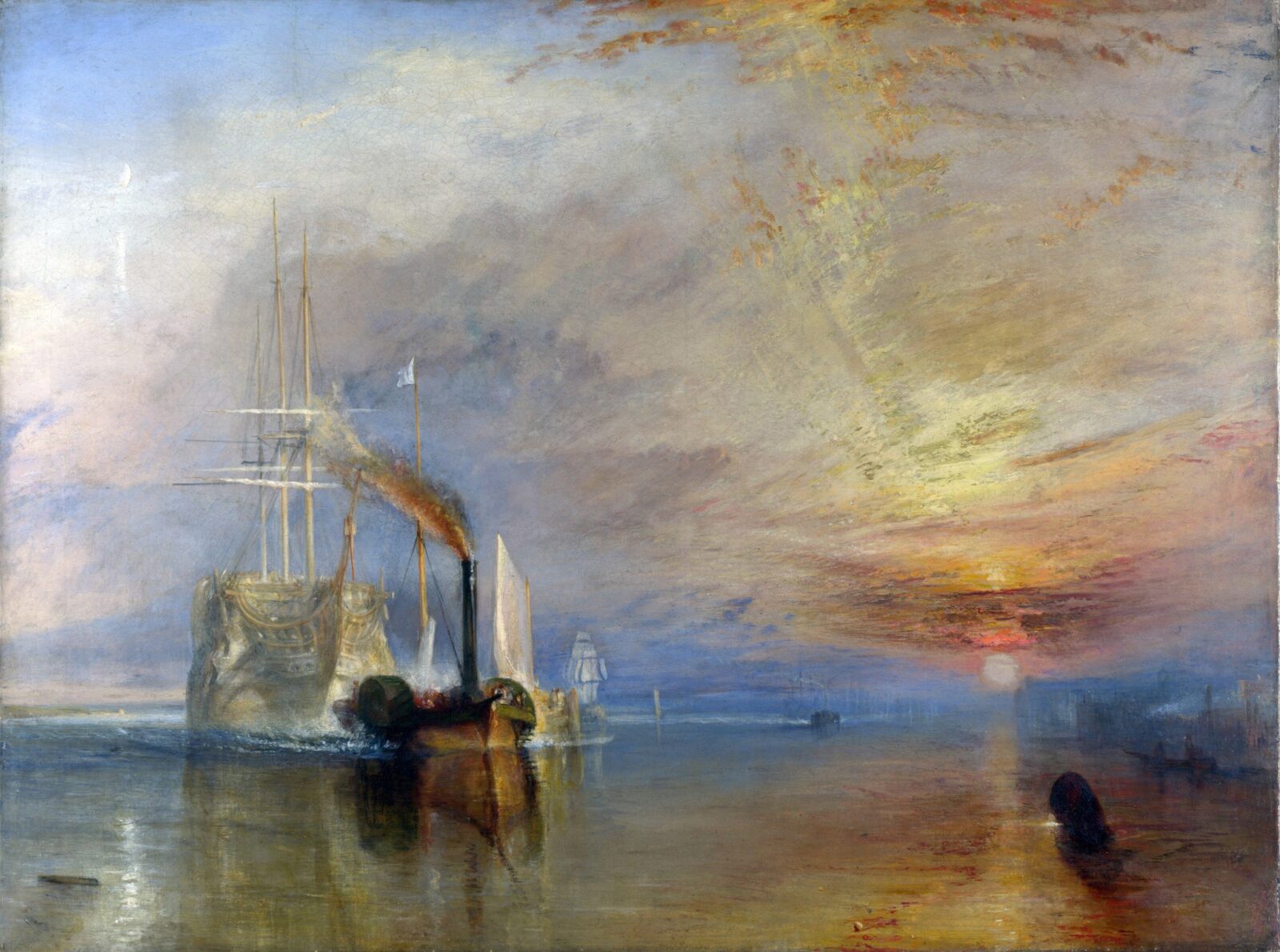
Nevertheless, to understand the picture “The last flight of the ship” Brave “to the public did not work. Against the backdrop of the flaming sunset sky, we see a veteran of the Battle of Trafalgar, a battleship “Brave”. A steam tug pulls the ship across the Thames to the dock, where it will be turned into a scrap. This canvas was exhibited at the Royal Academy in 1839 and was immediately announced “the most amazing work of the greatest master of our time.” The poetic and sad image of the old ship, which set off on its last journey, was for the aging artist not only a symbol of the outgoing epoch of sailboats, which pains the heart, but also a reminder of the impermanence of earthly existence in general.
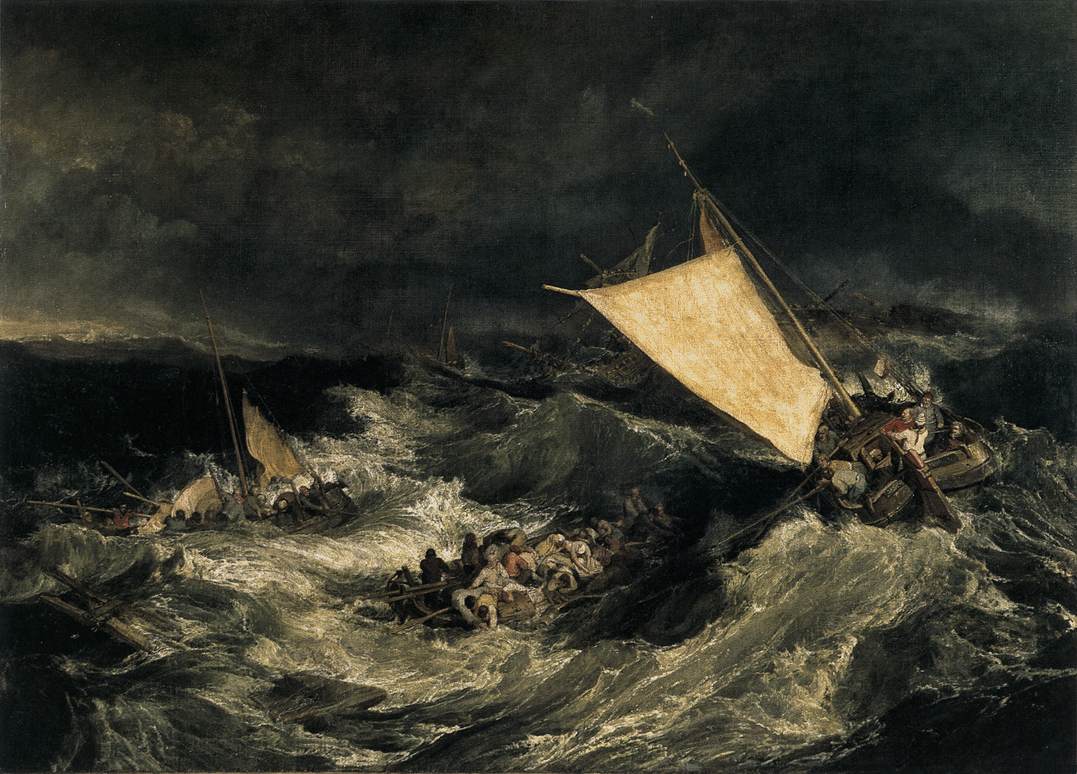
On the canvas, the sunset occupies the entire upper part of the picture, giving it an elegiac sound. The most weightless element of the canvas – light – has here the greatest physical density. Here it is worth noting that Turner’s enthusiasm for the yellow light has become legendary. In the upper left corner, we see the image of the month. The sun had not yet set, but the moon had already risen. Some critics interpret the lunar crescent as a symbol of the advent of a new era of steamships, while the setting sun symbolizes the decline of the era of sailing ships. The sunset is symbolic. Most likely, the ship was towed by the Thames in the afternoon, but the artist wrote in the picture is the sunset, creating an elegiac mood and symbolizing the end and death.
Contemporary Turner noted: “The flaming horizon poetically hints that the sun” Brave “rolls in glory” From the outset, the picture was perceived as a sad response to the departure of the century of sails and the advent of the era of steam. If we confine ourselves to this interpretation of the picture, then this attitude of the artist would look unusual, as Turner, as a rule, welcomed the technical innovations. In this picture, the artist honors not only the passing century but also welcomes the epoch that comes to replace it, because he delicately expresses in this work his admiration for the power of steam. The obscurity and vagueness of Turner’s images, his fascination with the play of colors, often discouraging complexity of hidden values and the growing brightness of the color palette could not win the minds and hearts of contemporaries in the Victorian era. At that time, the photographic accuracy of realism of the vagueness of images was preferred, the smoothness of lines – bold courage of smears, sentimentality – to academic idealism. Since Turner by nature was endowed with an extraordinary mind, the semantic load of his paintings could not be simple. For this reason, the artist’s designs often puzzled his admirers. It is necessary to try to understand the language of the hidden meanings embedded in his works, otherwise, most of his works will remain covered with a fog of misunderstanding. Such difficulties of visual perception, according to Eric Shaines, “could be more related to the hidden meaning that Turner tried to invest in their work at all stages of creativity.” The landscape for Turner served as a means to express his attitude to the diversity of human experience, and not just a way to show that the world around him is beautiful or terrible.






